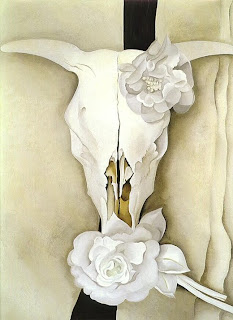I absolutely loved Ally Moore’s work. First off, I really enjoyed her fingerprint installation. Maybe it’d because I’m drawn to 3-D media, but I really enjoyed the effect it had when looking through all the layers.
To start off, I attended the SMP gallery opening early on in the semester and I enjoyed her work then too. There weren’t any talks about those works, or I didn’t go to them, so I didn’t have as much personal insight to the works. So it was nice hearing her talk to wrap it all together. I like what she had to say about her earlier pieces, the portraits of strangers. That all I knew beforehand, but I loved her materials. She explained how she went dumpster diving to find old materials, and she didn’t stop there. She explained the meaning behind trash and used objects. Her whole focus was on the past and the present intertwined. I loved this concept. She used trash because it had a previous life. Other people touched it, used it, and we have no way of knowing who did. She touched on this when she talked about her experience at the gas station. We all handle the pump and pump gas into our cars without a second thought as to who was there before us. But the truth is that people have been everywhere we have, and everyplace has a history.
I have felt this exact feeling many times in my life, and especially last semester. I was in the museum studies class entitled Post and Beam where we studied timber framing as the colonists would have built houses. We visited many of the old houses an structures in the area. When we went to the Brome Howard Inn, and we had a personal tour where visitors weren’t usually allowed. I had such a feeling of walking over history. We visited the slave quarters, and I saw graffiti that people had carved on the fireplace from over 200 years ago. Running my fingers over this graffiti made me feel so young in the world. I wondered whose names these were and who these people were. These people had lives, and they had lived there. I got the same feeling when I went to Sotterly Plantation. The house was in perfect condition, and was exactly as it was when it was new. People had walked over those same steps and held onto that same banister. But who?
Perhaps this is why I enjoyed her fingerprints so much. It’s true, there is history wherever we go, but we may never know what happened or who passed by. She said that fingerprints were material markers of where we have been and where we overlap. I think it’s one thing to say that, but with her SMP I was actually able to see in its physical form, which I thought gave me new insights to this iea of overlapping history.
I also liked how she enlarged the fingerprint. We think of fingerprints as being small and usually not of a bunch of people at once. I loved her installation. I enjoyed the transparency and her technique. Some were actually carved out of cardboard and others seemed to be drawn on. It created a lovely layered effect and the shadows were awesome as well!




